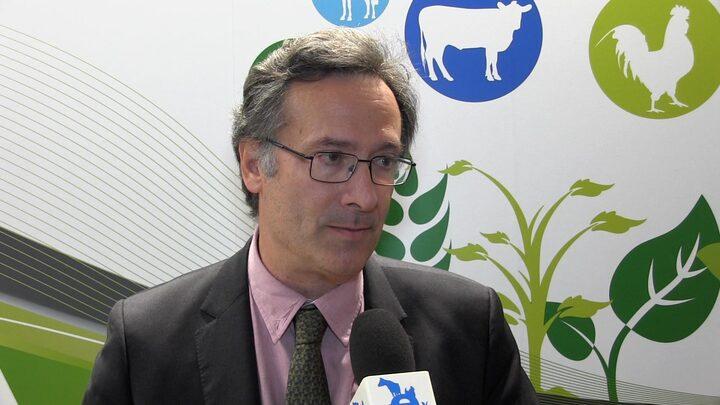Check out what is new in Poultry Industry
Find the best technical articles, forums, and videos on Poultry Industry at Engormix. Enter now and interact with the world's largest agricultural social network.
What is Stunning? How is it Regulated? Stunning is the process of rendering broilers unconscious or insensible before slaughter and various mechanisms may be used in facilities to achieve insensibility (Humane Slaughter Association, 2015). The methods used depend on the facility's location (on-farm vs. in a...
Comments : 0
Recommendations: 0
As discussed in our previous newsletter, circumstances arise that require poultry to be humanely euthanized. This newsletter provides a brief overview on-farm methods for the euthanasia of small numbers of poultry. Most of these methods are different from methods used at processing and methods used for culling or depopulation during disease...
Comments : 0
Recommendations: 0
On-farm euthanasia is not a pleasant topic, but when raising poultry, there are often circumstances that require birds to be euthanized, such as illness, injury and disease, because it is not always possible or feasible to treat affected birds. Euthanasia refers to “good death” and is distinct from other terms such...
Comments : 0
Recommendations: 0
Featured comment:
Yes Sir, Raw material management and investment on it will be the game changer for marketing edge in the coming time. In a regulated scenario the availability of quality material will be a challenge at the normal cost. ...
Comments : 5
Recommendations: 4
The egg is the most sensitive food for human, which require the minimumtransformation process form the farm to the table; and the one that is the most biologically active and without having undergone sterilisation processes. To preserve the optimal properties of the egg, it is crucial to ensure a good quality of the eggshell. The parameters of eggshell quality: resistance, increased porosity, fragility and the presence of malformations or fissures...
Comments : 0
Recommendations: 2
Featured comment:

Steven Nisly It is a weakness of all butterfly shutters. There are fans with motorized butterfly shutters which solves the high wind and sealing issues, such as the Skov Blue fan. The doors are not super insulated but they do have an insulation "disk" that winterizes the fan very well. It is also a variable speed fan. As you might expect it is not inexpensive. ...
Comments : 9
Recommendations: 3
.jpg&w=3840&q=75)
Mr. O.P. Singh - Managing Director of ABTL Enzymes, speaks about some problems the Indian Poultry Industry might face and the role of India in feeding the world...
Comments : 5
Recommendations: 4
New component in the Gut Health Solutions portfolio from Evonik Animal Nutrition
Phytogenics are important components of alternative solutions to antibiotic growth promoters
Product from this partnership to be available in Europe in the first quarter of 2023
Essen, Germany. Evonik and Dr. Eckel Animal Nutrition have entered into a partnership effective January 1, 2023. This agreement will enable Evonik's Animal Nutrition business line to expand its...
Comments : 1
Recommendations: 0

Martin Smith, Lead in Precision Livestock Farming at Evonik Animal Nutrition, speaks about the importance of embracing digitalization in the poultry industry
...
Comments : 0
Recommendations: 3

Antonio Martínez Sánchez, General Manager at LIPTOSA, points out the benefits of using Phytogenics as feed additives
*Certain information associated with products, their composition and claims may be different depending on the geographical region and may not be applicable in all countries. Liptosa reserves the right to adapt to the requirements and legislation in each case.
The information and technical recommendations provided herein are based on Liptosa's current knowledge and...
Comments : 0
Recommendations: 2
I. INTRODUCTION Broiler diets are formulated on the basis of ideal protein ratios (IPR) where selected amino acid requirements are expressed relative to lysine (100). However, IPR have been developed over decades for standard diets rather than diets with reduced-CP. This has led to the possibility that reduced-CP diets require modified IPR. For this reason, two sets of ratios were evaluated in diets with 210 and 180 g/kg CP in a 2 × 2 factorial design. II....
Comments : 3
Recommendations: 3
I. INTRODUCTION Phytases have been heavily researched for decades and been used commercially since the early 1990s). Phytase from microbial origin is therefore added to monogastric diets as it can reduce the incorporation of inorganic P sources in the feed, reducing feed cost and P excretion in the environment. Phytate is the main storage form of phosphate in plant matter and in vegetable feed ingredients where it can normally be found in concentrations of 5 to 25 g/kg (CVB,...
Comments : 2
Recommendations: 1
.jpg&w=3840&q=75)

Best Practices for Sustainable Waste Management and Environmental Solutions
Suggested link
Allowing poultry access to vegetated, woody spaces will benefit poultry welfare. One system that incorporates the production of vegetation and livestock, including poultry, is called a silvopasture system. Woody vegetation can provide a source of income for producers while providing preferred habitat for chickens. Silvopasture...
Comments : 0
Recommendations: 1
Introduction There is a mandatory requirement for crude protein (CP) in broiler chicken diets ranging from 180 to 230 g/kg. When dietary energy density is not limiting, the quality and quantity of dietary CP dictates birds’ growth performance. The digestibilities of protein and amino acids are pivotal to the quality of the inclusion of any feedstuff in diets for chicken-meat production. However, a series of studies [1–3] have demonstrated that feed conversion...
Comments : 1
Recommendations: 1
Laying hens are female chickens raised for egg production. The egg production system in the US is currently undergoing a transition from conventional cages to cage-free housing systems. The number of cage-free housing has increased from 4% hens in 2004 to 28% at the end of 2020 (USDA-NASS, 2021). Cage-free systems provide space...
Comments : 0
Recommendations: 0
1. Introduction The mucosal lining of the small intestine is a highly functional epithelium comprised of absorptive, secretive and sensory cells, which are constantly renewed by multipotent intestinal stem cells (ISC). ISC reside within crypts, and constantly proliferate for self-renewal and generation of progenitor cells, which differentiate into the functional cells that line lumen-facing villi (Carulli et al., 2014; Potten and Loeffler, 1990). Compartmentalization of the...
Comments : 0
Recommendations: 0
1. Introduction The occurrence of ‘wet litter’ in meat chicken sheds is associated with concerns regarding animal welfare, flock health, food safety, environmental impacts and reductions in production efficiency. Mitigating wet litter will only be achieved when there is thorough understanding of the multidimensional causal factors. This will require a multidisciplinary approach to understand the hydrology in the meat chicken shed micro-environment; the biological...
Comments : 0
Recommendations: 1
A highly pathogenic strain of Avian Influenza (sometimes called bird flu) is currently spreading across the United States. The virus has been detected in six States since January 2022 (see Figure 1). Avian influenza: about the...
Comments : 0
Recommendations: 0
by Sam Shafer
Switching from blue to red light in laying operations may benefit birds, but there are caveats
According to new research in The Journal of Applied Poultry Research , hens can benefit from both blue and red light—if these lights are provided at specific points in production. The study, led by scientists at Mississippi,...
Comments : 0
Recommendations: 0
by Sam Shafer
Poultry scientists find hens prefer lower UVA/B light
A new Poultry Science ® study suggests hens do like sunlight—just not too much. In fact, by monitoring hen behavior under different strengths of UVA and UVB light, the researchers found that hens prefer to spend more time in lower levels...
Comments : 0
Recommendations: 1














.jpg&w=3840&q=75)














